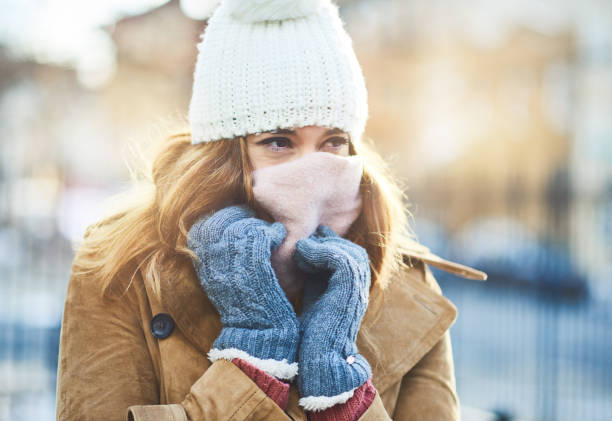“Women in excessive sensitivity to cold temperature” who feel chill mainly at the lower body, including limb and lower back, have increased.
A decade ago, low body temperature was known as one of the menopausal disorders. However, recently many young women notice subjective symptoms from excessive sensitivity to cold temperature.
A large number of women are suffering from excessive sensitivity to cold temperature, chilled limb soon even after taking a bath, and difficulty in sleep for feeling chilly not only in winter but also in hot summer.
A human possesses a function to keep temperature constantly. When the air temperature falls or rises, the information of temperature is transmitted from the skin to the brain, and instruction for body temperature adjustment will be given from autonomic nervous located in the hypothalamic area in the brain to many organs in the body. When this command structure does not function well, the person experiences excessive sensitivity to cold temperature.
The reason why many women are of excessive sensitivity to cold temperature is that the blood vessel of women is narrow, and the bloodstream is suppressed promptly when the blood vessel contacts even a little. Therefore the end of the limb quickly gets chilled. Another reason is that women have less muscle mass compared to men. Muscle produces heat from nutrition absorbed from food.
Hypothermia is likely to get fat
The person of excessive sensitivity to cold temperature and hypothermia is likely to get fat and difficult to have effects even if going on a diet.
It is because base metabolism decreases when the body is chilled. Low temperature means low base metabolism. We consume calories without any actions or while sleeping. It is the minimum required energy to keep life activities, including breathing, body temperature, and absorption. This is the base metabolism.
If the deep body temperature (temperature of internal organs) decreases by one ºC, the base metabolism decreases by 12% as well. Take an example of a woman whose base metabolism volume per day is 1,200 kcal; if her body temperature falls one ºC, the amount of energy consumption decreases by 144 kcal per day. If there is a difference in the consumption of calories, a person of excessive sensitivity to cold temperature tends to increase the weight under the same dieting condition. Since the effect of the enzyme becomes weaker, fat has trouble burning.
Additionally, as the more the body fat increases, the more easily the person becomes hypothermia, obesity, and hypothermia fall into a vicious circle.
If you cannot have the effect of diet, measure your normal temperature. Low body temperature may be the factor preventing you from weight reduction.




